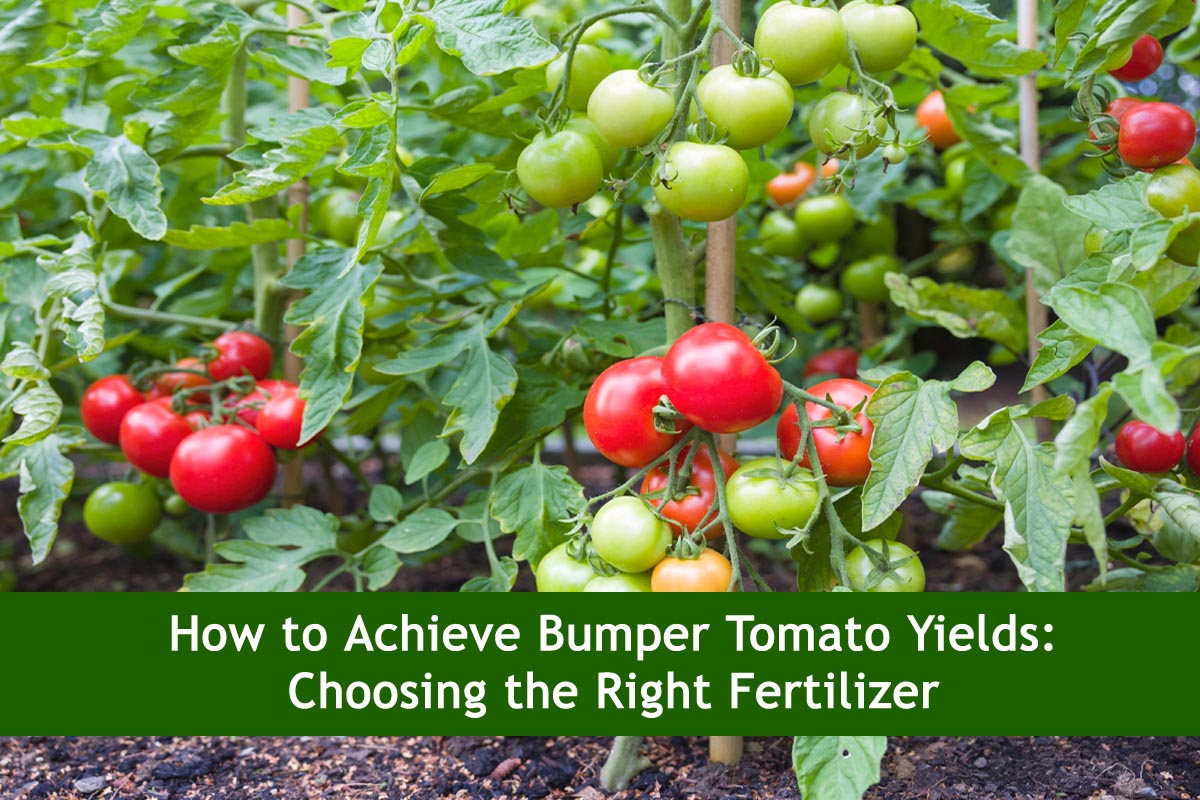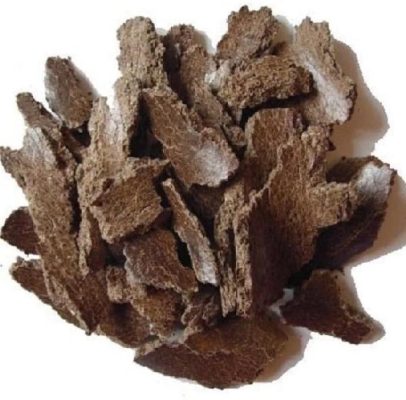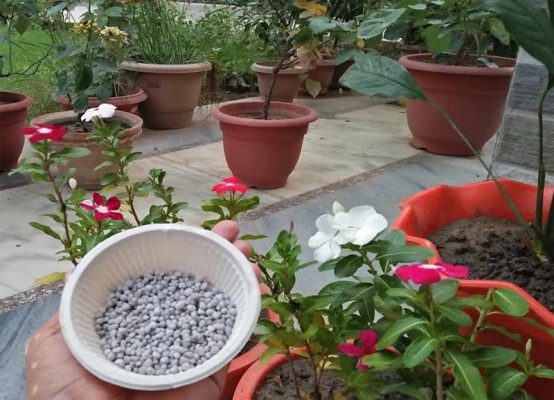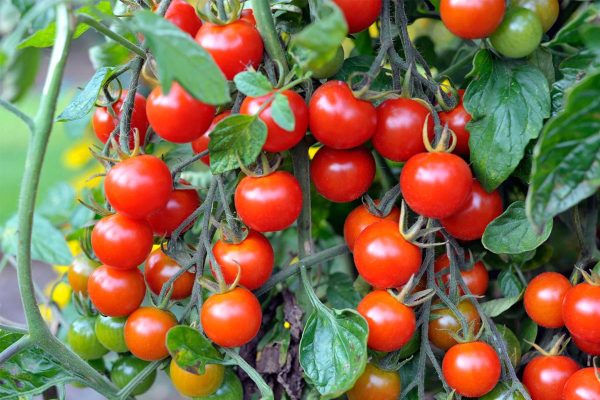
How to Achieve Bumper Tomato Yields: Choosing the Right Fertilizer
In the world of gardening, few things are as satisfying as harvesting a bountiful crop of ripe, juicy tomatoes. Whether you’re a seasoned gardener or just starting out, achieving bumper tomato yields requires more than just planting seeds and watering them regularly. One crucial aspect often overlooked is the choice of fertilizer. In this guide, we’ll delve into the art of fertilizing tomato plants for maximum yield, exploring the benefits of using mustard cake, DAP fertilizer, and animal dung.
Understanding Tomato Fertilization
Before we dive into specific fertilizers, let’s understand why fertilization is essential for tomato plants. Tomatoes are heavy feeders, meaning they require a steady supply of nutrients to support their growth and fruit production. While soil naturally contains some nutrients, they can become depleted over time, especially in intensive gardening practices. Fertilizers replenish these nutrients, ensuring robust plant growth and abundant yields.
Also Read This : Maximize Growth: Complete This Task in March for Fivefold Plant Growth!
Mustard Cake: A Natural Wonder
Mustard cake, derived from the pressed seeds of the mustard plant after oil extraction, is gaining popularity as a natural fertilizer. Rich in nitrogen, phosphorus, and potassium (NPK), mustard cake provides essential nutrients necessary for healthy plant development. Additionally, it contains glucosinolates, compounds known for their pesticidal properties, which help deter harmful pests and diseases.

When using mustard cake as a fertilizer for tomato plants, it’s essential to apply it correctly. Begin by mixing the cake into the soil at the time of planting or as a top dressing during the growing season. The slow-release nature of mustard cake ensures a steady supply of nutrients to the plants, promoting strong root development and vigorous growth. Moreover, its organic composition improves soil structure and enhances microbial activity, fostering a healthy growing environment for tomatoes.
Also Read This : Maximizing Mango Yield: Tips for Enhancing Growth and Fruit Production
DAP Fertilizer: A Phosphorus Boost
Diammonium phosphate (DAP) is a widely used fertilizer known for its high phosphorus content, an essential nutrient for flowering and fruit development in tomato plants. Phosphorus plays a crucial role in energy transfer within the plant, promoting robust root growth and enhancing fruit set and quality.

When applying DAP fertilizer to tomato plants, it’s essential to follow recommended dosage guidelines to avoid over-fertilization, which can lead to nutrient imbalances and plant stress. Incorporate DAP into the soil before planting or side-dress it around the base of established plants during the growing season. Regular applications of DAP ensure a consistent supply of phosphorus, supporting healthy tomato growth and maximizing yields.
Also Read This : Transform Your Curry Leaf Plant into a Verdant Forest Haven with This Magical Ingredient
Animal Dung: Nature’s Nutrient Source
Animal dung, such as cow or buffalo dung, has long been used as a traditional fertilizer in agriculture. Rich in organic matter and nutrients, including nitrogen, phosphorus, and potassium, animal dung provides a balanced diet for tomato plants. Additionally, it enhances soil fertility, improves moisture retention, and promotes beneficial microbial activity, creating an optimal growing environment for tomatoes.

To utilize animal dung effectively in tomato cultivation, it’s essential to compost it before application. Composting helps stabilize nutrients, reduce odor, and eliminate pathogens and weed seeds present in raw dung. Once composted, incorporate the dung into the soil or use it as a mulch around tomato plants. The gradual release of nutrients from composted dung sustains plant growth throughout the growing season, resulting in healthy plants and abundant yields.
Also Read This : Boost Your Garden: Transforming Cow Dung into Potent Compost in 30-40 Days!
Best Practices for Fertilizing Tomato Plants

While each fertilizer offers unique benefits, achieving bumper tomato yields requires proper application and timing. Here are some best practices to ensure optimal results:
Soil Testing:
Before fertilizing, conduct a soil test to determine nutrient levels and pH. Adjust soil pH as needed to optimize nutrient availability for tomato plants.
Balanced Nutrition:
While mustard cake, DAP fertilizer, and animal dung provide essential nutrients, supplementing with a balanced fertilizer containing micronutrients ensures comprehensive plant nutrition.
Also Read This : 5 Easy Tips for Growing Beets in Pots: A Beginner’s Guide
Timing:
Apply fertilizers at the right time to meet the specific nutrient needs of tomato plants. Incorporate slow-release fertilizers at planting and supplement with side-dressing or foliar feeding during the growing season.
Water Management: Proper watering is essential to maximize fertilizer uptake by tomato plants. Maintain consistent soil moisture levels to prevent nutrient leaching and ensure efficient nutrient absorption.
Monitor Plant Health:
Regularly inspect tomato plants for signs of nutrient deficiencies or excesses. Adjust fertilizer applications accordingly to maintain optimal plant health and productivity.
Also Read This : Five Simple Strategies for Prolonging the Blooms of Your Peace Lily Houseplants
Achieving bumper tomato yields requires a holistic approach to fertilization, with careful consideration of nutrient requirements and soil health. By incorporating mustard cake, DAP fertilizer, and composted animal dung into your gardening practices, you can provide tomato plants with the essential nutrients they need to thrive. Remember to follow best practices for fertilizing tomato plants, including soil testing, balanced nutrition, proper timing, water management, and plant monitoring. With the right fertilizer regimen, you’ll be rewarded with a plentiful harvest of delicious, homegrown tomatoes year after year.




